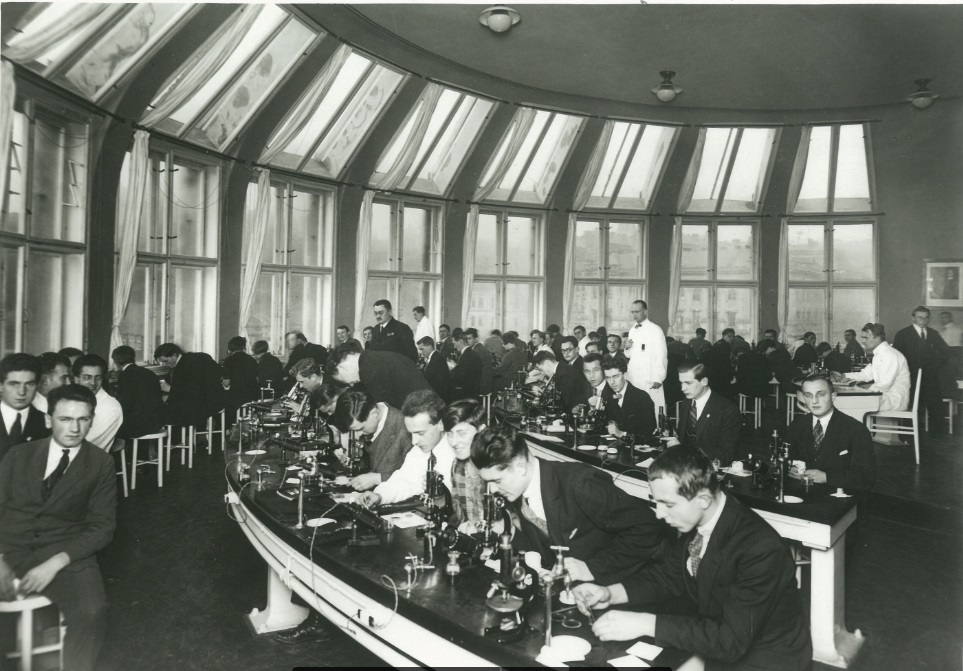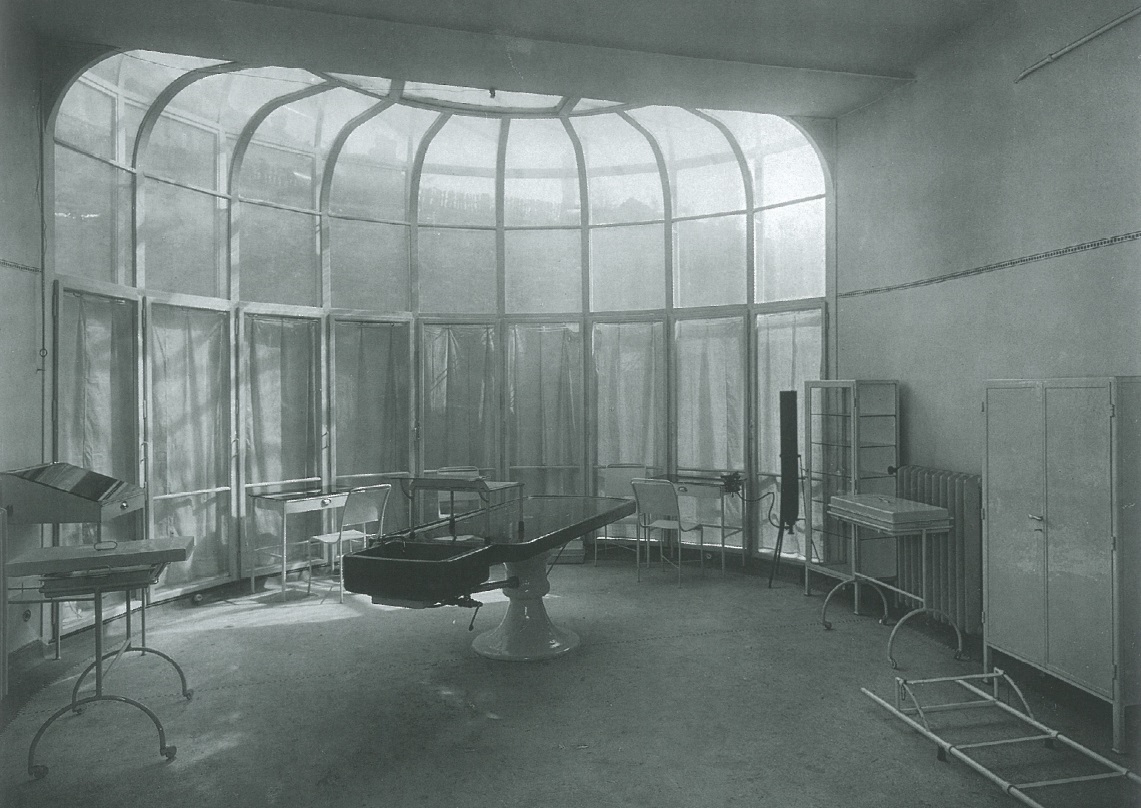Number One and Dates Ending With Number 8
Much has been written about the fact that history of the Czech nation has a peculiar relation to dates ending with number eight. Such symbolic dates are found also in the history of the 1st Faculty of Medicine of the Charles University.
The year of the university’s foundation, 1348, is generally known. In 1418, the Papal Schism had finally ended, and the newly elected Pope Martin V had confirmed decrees adopted by the Council in Constance, which among other things had a negative impact on the Prague university. In the following year, Hussite wars broke out and, as is well known, inter arma silent musae. The wars delivered the Prague faculty of medicine a shock from which it did not recover for a very long time.
Development of the Prague school of medicine
Fortunately, not all disasters in Czech history had a negative impact on the history of our school. In 1618, a fateful uprising of Bohemian estates had broken out, but the battle at the White Mountain paradoxically led to a takeover of the languishing Carolinum College by Jesuits, who within a few months renewed the operation of the Prague university. Their money, influence, and international perspective helped open a new chapter in the history of our institution. This became apparent especially after the conclusion of treaties in Münster and Osnabrück (1648), which definitively ended the Thirty Years’ War and brought peace to Central Europe.
In the Baroque Era, the Prague school of medicine was probably on a higher scientific level than most experts used to think. Students had at their disposal a large library, which included works of both Catholic and Protestant authors, our professors were members of international scientific societies (e.g. Academia Leopoldina), and many travelled to further their education abroad. One of the most glorious chapters in the history of our faculty, however, came much later, with the development of so-called Prague medical school in the first half of the nineteenth century.
University splits in a Czech and a German one
The revolutionary year of 1848 was a milestone, during which there surfaced with unprecedented strength calls for the ‘freedom of teaching and learning’ (Lehr- und Lernfreiheit) and for equal treatment of both languages of the land. This set the tone of events which gradually evolved over the next several decades, when the academic community of the Kingdom of Bohemia split in two linguistically defined groups. Since the beginning of the 1880s, this split was made official by institutional changes which took the form of a split of the Charles-Ferdinand University (where the language of instruction had hitherto been German) in a Czech and a German university.
The aims of the two universities and their medical faculties were radically different. Whereas the German faculty had already achieved remarkable scientific successes, the Czech side focused on building a national academic community, development of Czech scientific terminology, and on teaching: the Czech faculty had around 1,000 students, while the German one less than 700.
Thirst for education
On 28 June 1917, revolver shots had ended the life of Franz Ferdinand d’Este, the designated successor to the Austrian throne. This worked as a catalyst of the already very tense international situation. The First World War broke out soon thereafter. Even before its last shots had sounded, on 28 October 1918, independent Czechoslovakia was proclaimed. Our academic community stood at the threshold of a new age and faced hitherto unforeseen opportunities and challenges.
Thirst for knowledge was such that the two medical faculties in Prague (the Czech and German one) were, based on a decree of 28 January 1919, joined by a new faculty of medicine in Brno and half a year later, on 29 July 1919, by another medical faculty at the Comenius University in Bratislava. Establishment of these new medical schools was aided by our academics, because especially in Slovakia, there were hardly any national academic elites. It should be noted that the Slovaks never forgot the aid they received at the beginning of existence of an independent Czechoslovak state and they still emphasise it when speaking of the history of their academic institutions. And it has not always been easy, as the internist Kristián Hynek, one of the Czech professors in Bratislava had noted: The Ministry of Education and the Ministry of Health had promised us their full support and provided it. Unfortunately, there are also other institutions in the republic and their actions brought us nought but bitter disappointment... On these institutions’ unwillingness to fulfil their promises, he added in 1922: We are still waiting and telling ourselves that one should not make promises one is not ready to meet.

Building during the interwar period
Our faculty used the changed political situation to focus on its scientific development but also on the construction and expansion of facilities. Whereas the Austro-Hungarian government always found some means to support the German Faculty of Medicine, the Czechoslovak government focused on developing the Czech part of the university. Once the war ended, buildings whose construction had started before its outbreak – such as Hlávka’s Institute and the new building of the gynaecology clinic next to the Faust Haus – were quickly completed and a representative Purkyně Pavilion in Albertov was added to the campus. Ophthalmological, surgical, dermatological, and otolaryngologic clinic as well as the II Department of Internal Medicine were extended. Shortly before the outbreak of the Second World War, the Faculty of Medicine had also acquired facilities vacated by a military hospital in the Charles Square, where the III Department of Internal Medicine is located now.
Ambitious plans to fully reconstruct the compound of the General University Hospital have not been accomplished. The project remained on the planning stage. Twenty years was too short a time to implement such a financially demanding plan.

Female students? For a long time, simply unthinkable
When browsing through the lists of students of the Faculty of Medicine from early 1920s (which are now digitalised on the website of the Archive of the Charles University), one cannot overlook two things: first of all, that there were many foreign students, mainly from Slavic countries, among their ranks, and secondly, that there was a small but lively community of female students, which was something for a long time unthinkable.
This leads me to a wish I would like to express at the conclusion of my contribution, namely that we focus on the positive aspects of dates ending in number eight. We should focus on systematic support of scientific research, on the international dimension of the faculty, its openness to students and international collaboration, and on equal access to education, by which I mean not only gender equality, but also transparency and responsibility. The historical legacy which can guide us with respect to these subjects, is unalienable. We can lose it only by failing to keep it in mind...
Karel Černý, Head of the Institute for the History of Medicine and Foreign Languages
